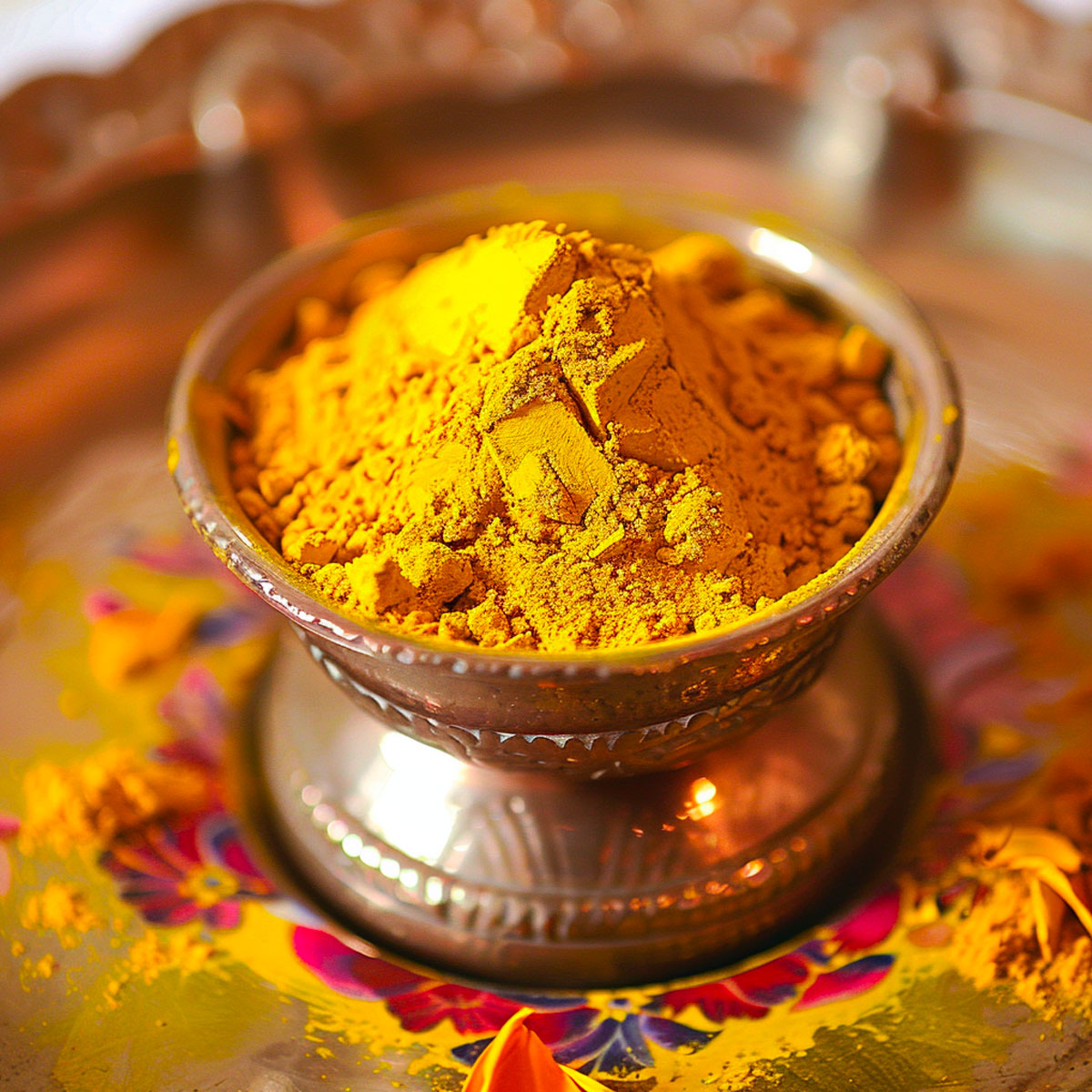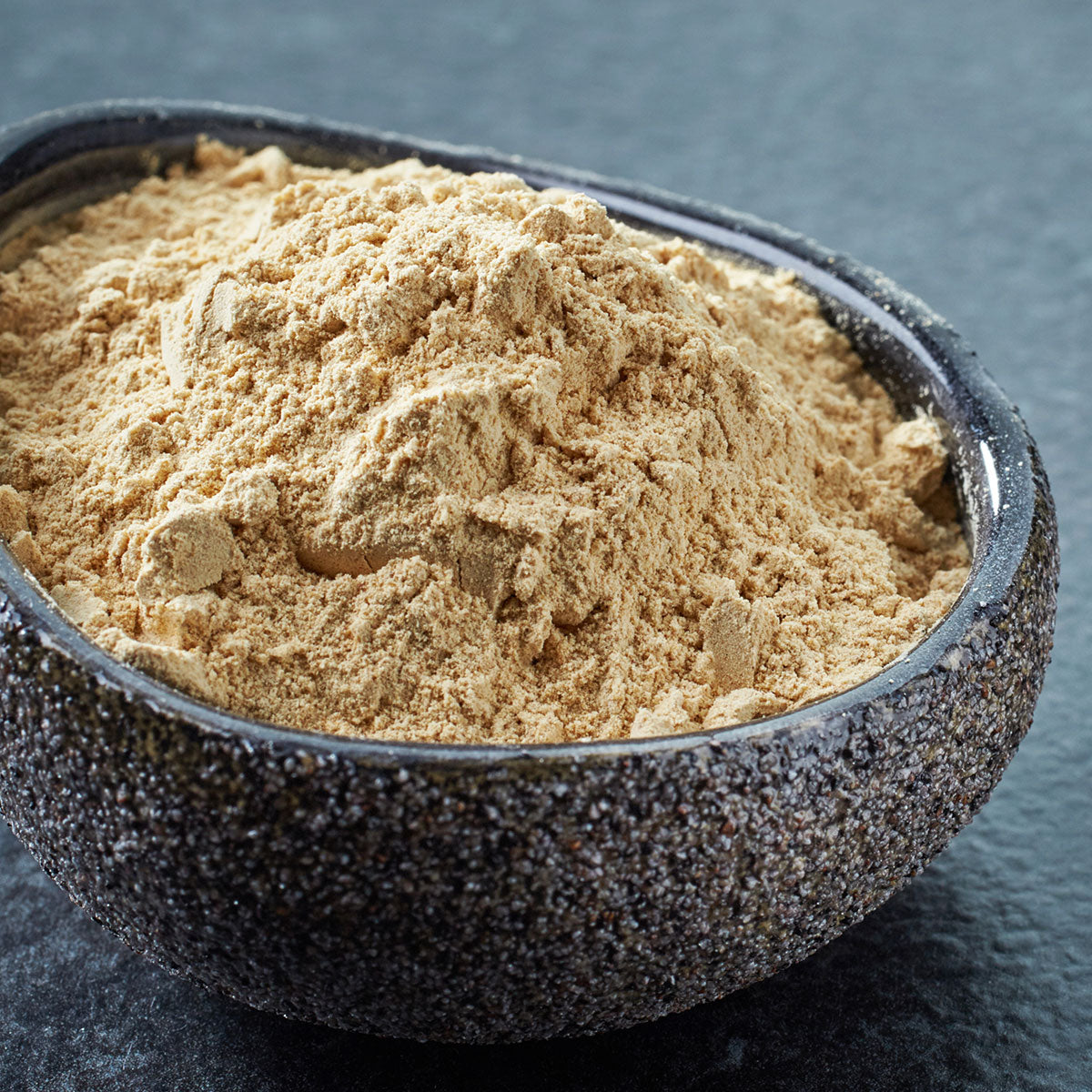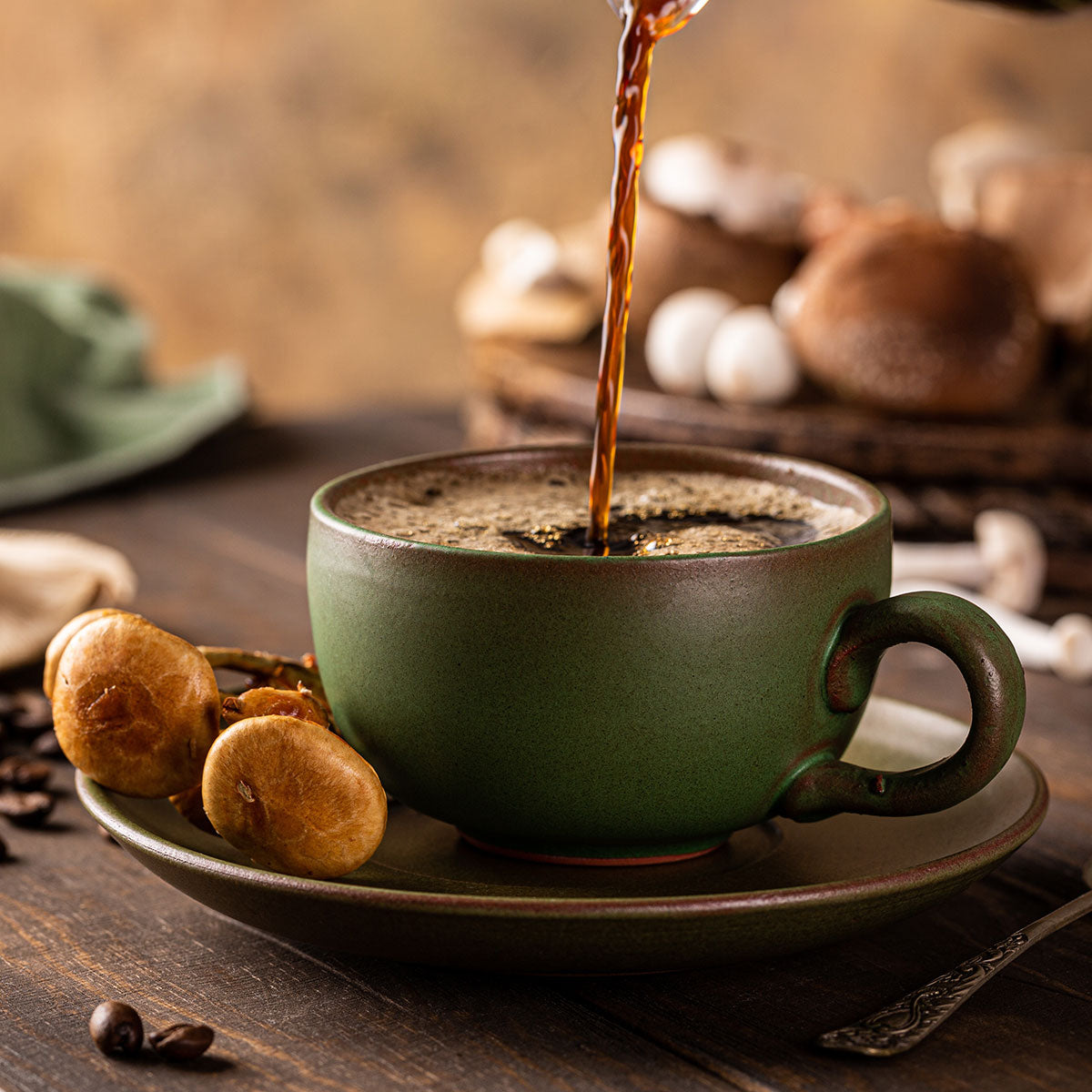Whether you’re an avid matcha drinker or new to matcha - these tips will help you choose only the best matcha (and avoid low quality and fakes). The quality of matcha is closely correlated with the benefits you’ll experience - so if you want to feel energised, focused, creative, whilst being calm and relaxed - you’ll love this post! Discover:
- What would make even a Buddhist monk cry.
- What helps enhance your creative thinking and problem-solving skills.
- The signs that help you easily tell a good matcha from a bad one.
- How to avoid harmful chemicals and radiation in your matcha.
"Tea is a miraculous medicine for the maintenance of health, it is the elixir that creates the mountain-dwelling immortals”
- Eisai (1141-1251), Zen priest that started the custom of matcha drinking in Japan.
A few years ago, when I first heard the buzz about matcha, I bought a tin of “ceremonial grade” matcha in a shop only to find myself cringing at the strong bitter and fishy taste (and yes, I do drink our chlorella pure with only water each day). With all the research out there on the benefits of matcha I tried to force feed it to myself a few times, but the taste was so horrendous that the tin was left standing on my shelf for years.
Later on when matcha lattes started appearing on the menus in juice bars and high street coffee shops I once again decided to give matcha a go. I was served a grey-coloured drink that tasted like sweet mold. I decided that matcha was not for me after all.
…Can anyone relate?
And So I Found The Problem…
Just over a year ago when researching Japan I came across the fascinating story of matcha. Matcha was historically only available for the Japanese nobility, the Shogun (the leader of the samurai warriors) and Buddhist monks - it helped them achieve clarity and concentration for extended meditation sessions.
Its effects were so profound, they created an entire ceremony around it, translated as “The Way of Tea”.
It’s then when I realised that, just like with many other previously exotic and rare foods that have been made trendy, I had just experienced BAD MATCHA (the Japanese Buddhist monks would probably cry after tasting it!)
As with every Burst, we got a sincere aspiration to discover and bring out the very best, purest and authentic matcha - one that was truly wholesome and would not only benefit you - our Bursters - but would also support small farmers and help our planet.
A year of research later, testing and travelling across Japan in search for the perfect matcha - we have found the most amazing authentic matcha.
It’s truly unique. Up until this day we have not come across any other ceremonial grade matcha that can compare in taste, colour, effects and purity.
It’s grown on an organic family farm in a remote sub-tropical corner of Japan and selected by a renowned tea master - who puts his heart and soul into his matcha without any commercial gain in mind.
That’s why we’ve been receiving such crazy feedback from so many Bursters, who say they’ve never tasted matcha of this kind:
“Wow @OrganicBurst’s Matcha is incredible. I’ve been drinking this stuff for 10 years and this is probably the best tasting. And sooo green” @SophiaIsabella on Twitter
“I literally can’t imagine how I was drinking the bad matcha before….This matcha is so sweet and delicious” @allthingsfamily on Instagram
“I’m an avid drinker - minimum 3 cups a day and I just truly enjoy your matcha. I’ve tried almost ten brands and thought I found one until I tasted yours. Wow” @aiciladulceix on Instagram
Why It’s So Important To Only Choose The Highest Quality Matcha
Matcha is one of the world’s most powerful and fast acting teas for a focused, alert, yet calm and steady state of mind.
Its most important nutrient - also one of the rarest nutrients in all of nature - L-theanine has profound effects on your mind’s state of alertness, stability, focus, memory and more. In studies it’s been shown to increase your alpha brain waves - which leads to enhanced problem solving and creative thinking.
Apart from influencing the taste and colour of matcha, quality also determines whether or not you will actually experience matcha's benefits.
L-theanine is only high in the finest quality, true ceremonial grade matcha. The cheaper and lower the quality of matcha, the lower its content of L-theanine.
That’s why only the finest grade ceremonial matcha will ever be used for the Japanese Tea Ceremony and the Buddhist meditation.
"To experience matcha's true effects you need to only choose genuine ceremonial grade matcha"
TWEET IT
>>Read below to discover the visual signs of a high quality matcha
How To Easily Tell High Quality Matcha
Someone said on social media the other day that matcha is just “a powdered green tea”. This cannot be further from the truth!
Sadly in reality - many matcha products sold in shops today are indeed just powdered green tea (sold for the price of matcha).
There are no regulations that a company needs to comply with before selling their product as genuine “matcha”, so there are lots of fakes sold both in health food shops and on the internet.
Everyday matcha drinkers lack the critical information to show them why they must always seek out quality and in turn, the tea companies refuse to buy high quality matcha because the consumers cannot tell the difference, making it a vicious circle.
Now, not only the Buddhist monks, but also the Japanese tea farmers and tea masters would all cry if they saw what is being sold today as matcha in the Western health food shops!
So much tradition, effort, attention to detail and love goes into creating the finest genuine matcha.
Nonetheless equipped with the below points you as a matcha drinker will easily be able to tell high quality matcha from down right bad one.
1. Colour - should be electric green (not faded yellow-green)
The first sign of high quality matcha is its colour - it should be almost electric green, bursting with chlorophyll and other goodness.
Many matcha products on the market are of a dull, light green shade - one of the causes of that is they’re either not shaded or late harvests are used, when matcha has already been exposed to the sun and lost some of its nutrients.
2. Taste - Should Be Creamy, Almost Sweet And Not Bitter
The taste of matcha should be very gentle, smooth and not bitter. For instance, Organic Burst Matcha is described as “creamy without cream” and “almost sweet without any bitterness”.
This makes it easy to drink purely with water to enjoy it the traditional way it has been enjoyed for centuries and get the most out of its powerful effects.
If the taste is bitter - that means that what you’re drinking is most likely not matcha but just much cheaper powdered green tea or it’s later harvests of matcha, which are far less nutritious and beneficial.
Bitterness is not only a sign that you will cringe while drinking it, but also that your matcha’s benefits are on the lower side.
Remember L-theanine - matcha’s most important nutrient? It is really the contents of L-theanine that give matcha its sweet and creamy flavour…
So the more bitter your matcha is, the less L-theanine it has - and therefore the fewer effects you will experience.
"High quality matcha should taste smooth with subtle sweet notes, creaminess and not bitter at all."
TWEET IT
3. Taste - Should Not Be Fishy, Salty or Pungent (Umami)
When your matcha tastes fishy…well you know something fishy is going on…literally!
This is the insider knowledge that we learnt from our year of research and speaking to the tea masters in Japan.
Many matcha (especially non-organic) is grown using fish bones or beef bone fertilisers.
And, moreover, it has come to surface that Western matcha companies put pressure on the Japanese tea farmers to use more of these fertilisers because the Western consumers like the “salty”, “pungent” or “umami” flavour of matcha.
In reality - as mentioned above - high quality matcha should taste very smooth, gentle, creamy without cream and almost sweet. There should not be any “umami”, fishy or salty flavour to it.
Adding animal remains as fertilisers is also a problem because many vegans and plant-based folks buy matcha as a vegan superfood, whereas in reality it’s far from the truth (and no, it will never say so on the packaging).
At Organic Burst we never use beef bone powder or fish powder as fertilisers - we only use organic plant-based fertilisers - and you can tell it from its delicate, smooth creamy taste.
"Matcha that tastes fishy, salty or pungent is likely to be grown with fish or beef bone fertilisers"
TWEET IT
4. Shade Grown for at least 21 days
Did you know that green tea can only be considered and called “matcha” if it was shaded for at least 21 days?
If it wasn’t shaded or shaded for a shorter time then your matcha product is a mere powdered green tea - and not matcha.
For instance, the tea plant that is used for Organic Burst Matcha is covered for 21-24 days to shade it from the sun.
Think of shading like a “work out” for the plant, causing it to develop and push out a huge amount of nutrients into its leaves.
The shading defines the colour, taste, nutrient contents and ultimately the effects that you will experience from matcha.
Tea farmers generally don’t like shading as during this time the plants that are weaker (due to pesticides, other chemicals and poorer soil) are likely to die.
So in organic farming a great amount of care has to be put into the soil a long time before shading occurs - to ensure the plant is naturally strong and can survive the shading.
That’s why true matcha is so much more expensive than green tea powder.
At Organic Burst we went one step ahead in quality - our organic family farm utilises a unique patented shading technique - the shading cover material has been especially designed and engineered to prevent the sunlight from getting in, while ensuring the plant is not heated beneath - at this time there is no other farm in the world using this technology as it was invented on our farm.
5. Top leaves of the first harvest of the year
The highest quality and most nutrient dense tea leaves are those that emerge after the tough winter period - these are the leaves that are the most sought after by the tea masters.
There are 4 harvest periods during the year.
Ceremonial Grade matcha should only be made from the very first pick during the first harvest in spring (after having been shaded for at least 21 days) - the most expensive leaves due to their far superior quality.
The later harvests are cheaper as matcha is exposed to the sun, loses its nutrients and develops a bitter taste. Culinary grade matcha is the cheapest one and comes from the last, 4th harvest of the year.
On top of that, true high quality matcha should come from the top leaves of the tea plant.
Most Ceremonial Grade matcha is done using the top 8 leaves, but at Organic Burst we take it to another level of quality and only use the top 4!
Why are the top 4 leaves the absolute best?
Because the younger and more tender the leaf, the better quality the tea, the gentler and sweeter the taste, and the higher the nutrients, especially L-theanine.
This amino acid is the sweet element of the tea, and delivers a huge number of benefits, so the top 4 leaves give the sweetest, smoothest tea without bitterness and with the most powerful benefits.
"Finest quality matcha only comes from the top 4 leaves of the plant from the first spring harvest"
TWEET IT
6. Freshly milled before sale - no aluminium or plastic bag inside
High quality Ceremonial Grade matcha normally comes in a tin and contains 30g of matcha.
This is because matcha should be freshly milled before sale and consumed soon after opening (anything within 2 weeks to 2 months).
Our tea master - renowned as one of the leading matcha masterminds of the globe, coming from several generations of tea masters - was quite surprised when we told him that most matcha that is sold in the US and Europe today comes in an aluminium or plastic pouch inside the tin (with a chemical-filled sachet to keep it fresh).
When you see matcha packed in such a pouch within a tin - this signifies that the matcha is not freshly milled. It is expected to be sitting on the shelves or in a warehouse for so long that it even needs this extra pouch and a chemical-filled sachet to keep it from going off.
Such matcha can be milled a long time before you buy and consume it.
Just look at its colour and you will know the truth! You may be consuming an already oxidised matcha that has lost much of its nutrients so you won’t be getting the full benefits.
That’s why our matcha is produced in very small batches so that we can achieve the ultimate state of made-to-order freshness, meaning you get the most out of it. Picked leaves are stored in technologically advanced refrigeration storage, maintained in accordance to monitored oxidation rates.
In fact, our tea leaves are ground into ultra-fine matcha powder only 2 weeks before going on sale!
This is also why when you open your Organic Burst Matcha tin, there are no plastic or aluminium pouches inside and there are no moisture absorbent sachets that may be toxic.
Just smell the freshness of that puff of matcha vapour when you open the tin!
7. Ultra finely milled - do the mill test!
The standard of milling also influences the final flavour of matcha.
The finer the milling the more exquisite the taste of matcha and the more absorbable its nutrients will be - meaning you’ll experience quicker and more powerful effects! Yep!
Poor quality matcha is not finely milled because the best milling machines can only process young and thin matcha leaves that come from the first harvest of the year. For example green tea powder (that is so often sold in shops as matcha) cannot be milled using the matcha milling machines as the leaf is too coarse and old.
Try the mill test yourself (as shown in our video above) - prepare a small pile of regular matcha or green tea powder and spread it by pulling your finger down the white sheet of paper. The fuller the trace the finer the milling of your matcha.
When you drink a cup of Organic Burst Matcha you’re getting the most effects and an outstandingly fine taste - because we employ special milling technology to achieve an ultra fine matcha powder.
8. Should only come from Japan
Despite the fact that matcha products sold online and in shops now come from all over the world - real matcha can only come from Japan.
Growing and producing authentic matcha is a real Japanese art - one that has been passed from generation to generation of tea farmers and tea masters.
Sadly this ancient art is now rapidly fading and in danger of being lost forever to time...
Tea growing families in Japan, after many generations are now closing their businesses. Mass produced, low quality tea from giant plantations in China and India are pricing them out of the market.
It is our mission here at Organic Burst to help preserve this art and spread the knowledge about how special it is to as many matcha-loving folks as possible….and support small organic tea farmers, like our family tea farm in Kagoshima.
9. Farmed In a Clean Location Far Away From The Fukushima Nuclear Disaster
We all know radiation exposure causes cancer and other degenerative diseases, that's why it’s key that your matcha is grown in a pure location as far away as possible from the Fukushima nuclear disaster.
From numerous scientific studies we now also know that long-term pesticide exposure is linked to cancer, birth defects, infertility and neurological disorders (to mention but a few), so the fewer pesticides in our diet the better.
That’s why it’s so important that you daily cuppa does’t contain either of these poisons.
As many matcha connoisseurs already know - many Ceremonial Grade matcha products today come from Uji. This is an area near Kyoto, famous for its traditions and the history of matcha, dating back to the 13th century when Zen priest Eisai first brought matcha into Japan.
That was then, but now it’s a totally different story….
The Zen monks did not know pesticides and other harmful chemicals. Matcha tea farmers used only natural ways of growing their tea. And the Fukushima disaster was many centuries away in the future.
With an abundance of non-organic matcha farms (that spray their tea plants with lots of pesticides, especially during the shading period) existing next to organic farms - cross contamination is inevitable. So much that it’s hard to make sure your matcha that comes from such traditional and yet small areas such as Uji is 100% pesticide free and truly organic.
At Organic Burst we always challenge the status quo in our search for the best.
We’ve searched all over Japan for the purest and highest grade organic matcha farming location and we found it in the Kagoshima province - the furthest corner of Southern Japan where the soil is rich and the air is pure, filled with the aroma of fresh tea.
This remote subtropical volcanic paradise is located far, far away from the area affected by the Fukushima disaster
Nonetheless for quality assurance our matcha is tested for radiation levels on a monthly basis to ensure none is ever detected.
The isotopes tested for are Cesium-134, Cesium-137 and Iodine-131.
So, when choosing your matcha make sure it’s located far away from Fukushima disaster, tested and found 100% free of radiation and pesticides.
10. Should be Truly 100% Organic
As I discussed before - in studies pesticides and insecticides have been linked to all kinds of serious health issues, therefore in our own diets we always make sure to avoid them and go for organic or non-sprayed.
Pesticides and insecticides are also known to harm and thought to even collapse bee colonies, as well as other insects and animals (that’s what their intended purpose is, really). This disturbs the ecosystem and harms biodiversity on our planet.
It’s particularly important that your matcha is free from these harmful chemicals (especially because you want to enjoy its health benefits without any side effects!.
Why?
Because matcha has to be shaded for 21-24 days. During this time matcha is highly susceptible to being attacked by insects - that thrive in the shade and eat the tea plant.
In non-organic farming during this period the plant is continuously drenched with insecticides.
In organic farming if the plant is weak it’s highly likely to die during this time, that’s why a lot of care and effort has to be put throughout the year to make sure the plant is naturally strong to survive the shading - and a naturally strong plant will naturally produce a superior quality leaf.
This is a very costly and labour-intensive process, therefore non-organic matcha is the standard and many organic matcha are in reality either shaded for a very short time or not at all (making it merely a milled green tea powder and not matcha).
So when buying your Ceremonial Grade matcha it’s key to make sure it’s actually organic, and vice versa - when buying an organic matcha - make sure it’s a genuine high grade as you may be getting an expensive organic green tea powder.
At Organic Burst our farm only uses organic practises and never any pesticides or insecticides.
The secret to how our matcha is the highest grade and is also organic is….
A strong army of tea plant protecters that live on our farm - ladybirds and spiders!
No one harms them and they live in complete harmony with their surrounding. There are even signs everywhere you go - saying to respect the ladybirds!
11. Avoid “instant” or “ready to go” matcha
Ready to go (instant) matcha is a recent invention. It has corn starch fiber (dextrose) added to it - in order to dissolve the powder instantly.
It kills the nutrients in matcha.
We think it defeats the purpose of drinking matcha and really should not be called matcha anymore.
Avoid instant and "ready-to-go" matcha products as they have additives that can destroy nutrients
TWEET IT
When you choose high quality matcha - the one that is finely and freshly milled and properly grown - it will also easily dissolve in both hot and cold liquids. And bonus: you can drink it pure (without any nasties added in!)
Just take your tin of Organic Burst Matcha with you when travelling or prepare some matcha in your shaker to take with you to work or the gym and feel the amazing energy!
By now you’re an expert on matcha! And it’s time for me to go whisk one more delicious cup!
Love, Katya 💚





